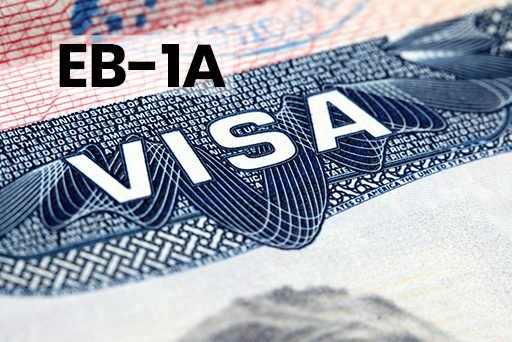Understanding the EB-1A Visa
The EB-1A is designed for the crème de la crème in their respective fields. It offers a pathway for exceptionally talented individuals to apply for a green card, granting them permanent residency in the United States. This visa is reserved for those who have risen to the very top of their field, whether in science, arts, education, business, or athletics.
To be eligible, one must not only show that they have achieved sustained acclaim at a national or international level but also that their presence in the US will significantly benefit the country.
Recent updates to the USCIS Policy Manual on the EB-1A classification provide clearer guidelines on what constitutes acceptable evidence of such extraordinary ability. These changes are designed to make the application process more accessible, offering hope to a broader range of applicants with exceptional skills and achievements.
The policy now includes a more comprehensive list of evidence types that can demonstrate an applicant’s eligibility, from awards and honors to leading roles in distinguished organizations, substantial contributions to their field, and high remuneration relative to others in the profession.
For individuals considering this path, understanding these updates is crucial. It opens up new possibilities for demonstrating their qualifications and paves the way for a smoother application process. By broadening the criteria, USCIS acknowledges the diverse ways in which exceptional talents can manifest and contribute to society.
This not only benefits the applicants by providing a clearer roadmap to success but also enriches the United States by attracting individuals capable of making significant contributions to their fields and the broader community.

Key Updates in the Policy Manual
The recent updates to the USCIS Policy Manual concerning the EB-1A visa classification mark a significant shift in how extraordinary ability is assessed, offering more avenues for applicants to demonstrate their qualifications.
Let’s explore these updates in further detail to provide a richer understanding for potential applicants:
- Recognition for Lesser-Known Awards: Expanding the types of recognized awards allows for a broader acknowledgment of excellence. This change appreciates that significant achievements come in various forms and at different career stages. It recognizes the value of academic and early professional recognition, opening doors for young prodigies and scholars who have made remarkable strides in their fields.
- Membership Criteria: By valuing higher-level memberships in professional associations, the policy now acknowledges the peer recognition that comes with such affiliations. This update highlights the importance of professional communities in endorsing the abilities of their distinguished members, thus providing a more inclusive criterion that appreciates the diversity of professional excellence.
- Publications Featuring the Applicant: This criterion underscores the impact of the applicant’s work as reflected in publications. Focusing on the substantive contribution and recognition of the individual’s work in reputable publications ensures that the emphasis is on the quality and significance of the contribution rather than merely the number of publications.
- Judging Peers: Recognizing peer review activities, including reviewing conference papers or participating in government research evaluations, as evidence of leadership in the field illustrates an understanding that such engagements are critical to the advancement and integrity of scholarly and scientific research. This acknowledgment highlights the importance of peer-led quality control mechanisms in academia and research.
- Original Contributions: Stressing the need for documentation that shows the broader impact of an applicant’s work addresses the sometimes difficult task of distinguishing between mere participation and truly significant contributions to a field. This clarification helps applicants better understand how to showcase their work’s influence beyond its immediate academic or professional sphere.
- Authorship and Presentations: By recognizing presentations at significant conferences alongside published scholarly articles, the policy acknowledges the various platforms through which influential ideas and research findings are shared with the community. This recognizes the role of academic and professional conferences as vital venues for disseminating and scrutinizing new knowledge.
- Critical Roles in Organizations: This update provides a clearer framework for evaluating an applicant’s role within organizations, acknowledging that leadership and influence can be exercised in various settings, including academia, startups, or established businesses. The inclusion of factors like national rankings and significant funding as indicators of an organization’s prestige and the individual’s role within it allows for a more nuanced assessment of leadership and impact.
- Salary and Financial Rewards: By considering future earnings potential and financial rewards as evidence of exceptional ability, the policy recognizes the market value of an individual’s skills and contributions. This change reflects an understanding that compensation often directly reflects an individual’s professional standing and the significance of their contributions to their field.
Each of these updates represents a thoughtful adjustment to the evaluation of extraordinary ability, making the EB-1A visa more accessible to a wider range of talented individuals. By providing clearer guidelines and acknowledging a wider array of evidentiary materials, USCIS is adapting to the diverse ways excellence and significant contributions manifest across different fields and disciplines.
Comparative Analysis of Previous and Current Criteria
The USCIS Policy Manual updates have introduced several changes to the EB-1A visa criteria, marking a significant shift in how extraordinary abilities are recognized and evaluated.
Let’s look at the comparative analysis between the previous and current criteria, providing a clear view of the alterations and their implications for prospective applicants.
Awards and Recognitions
Previous Criteria: The focus was primarily on major, internationally recognized awards, which placed a high barrier for many applicants who had not received such prestigious accolades.
Current Criteria: The updated policy has expanded to include lesser-known awards, including those aimed at early-career individuals, student achievements, and contributions within specific professional communities. This change acknowledges a wider range of accomplishments, making the visa more accessible to individuals demonstrating excellence in their fields.
Membership in Associations
Previous Criteria: Membership requirements were stringent, often limited to associations that demanded outstanding achievements as a prerequisite for entry.
Current Criteria: The policy now considers higher-level memberships in professional associations, recognizing the value of such affiliations as evidence of peer recognition and professional standing, even if the association itself does not specifically require extraordinary achievements for membership.
Published Material about the Applicant
Previous Criteria: Emphasis was placed on the quantity of publications and their reach without significant consideration of the content’s impact or the applicant’s role in the mentioned work.
Current Criteria: There’s a shift towards evaluating the quality and impact of the published material about the applicant. Specifically, the policy looks for documentation highlighting the value and significance of the individual’s contributions, including works focusing on team projects where the applicant played a key role.
Judging the Work of Others
Previous Criteria: The criteria were limited to traditional forms of peer review or judging in competitions, often not considering the broader spectrum of evaluative roles professionals might engage in.
Current Criteria: The updated policy broadens the scope to include peer reviewing for conferences and government research programs. This recognizes a wider array of professional activities as evidence of leadership and expertise in one’s field.
Original Contributions of Major Significance
Previous Criteria: Demonstrating “major significance” was often challenging, with a heavy emphasis on the impact of work through traditional metrics like citations and patents without considering the broader application or influence.
Current Criteria: The focus has shifted to the need for additional evidence that shows the contribution and its significant attention or commercialization. This allows applicants to present a more comprehensive picture of their impact within their field.
Authorship of Scholarly Articles
Previous Criteria: The evaluation primarily centered around articles published in top-tier journals, often overlooking other significant forms of scholarly output.
Current Criteria: Recognizing the diversity in scholarly communication, presentations at significant conferences are now considered alongside traditional publications. This acknowledges the importance of various platforms in disseminating research and contributing to academic discourse.
Critical/Leading Roles
Previous Criteria: Evaluation of roles heavily depended on the organization’s prestige or the position’s visibility, sometimes ignoring the substantive impact or contribution of the individual within their role.
Current Criteria: The updated policy provides a clearer framework for assessing roles, considering the quality of the organization and the individual’s contribution to its success. This includes looking at national rankings, the receipt of significant funding, and the overall impact of the individual’s work.
Salary or Other Remuneration
Previous Criteria: The assessment of financial success was typically based on past earnings, documented through tax returns or similar records, without considering potential future earnings.
Current Criteria: A more forward-looking approach is now accepted, where future salary and potential market value of the individual’s skills and contributions are taken into account, recognizing financial success as a measure of extraordinary ability.
This comparative analysis shows a progressive shift towards a more inclusive and comprehensive evaluation of an individual’s extraordinary ability. The updates make the EB-1A category more accessible to a broader spectrum of talented individuals, acknowledging various achievements and contributions to their respective fields.
Tips for a Successful Application under the New Policy
With the recent updates to the EB-1A policy manual, applicants now have a clearer pathway to demonstrate their extraordinary abilities.
Here are some practical tips to enhance your application under the new guidelines:
- Broaden Your Evidence Portfolio: Given the expanded criteria, including various evidence types is advantageous. Beyond traditional awards and recognitions, consider incorporating evidence of lesser-known accolades, memberships in professional associations at all levels, and evidence of your work’s impact through publications and presentations. This diversified approach can showcase the breadth and depth of your achievements.
- Highlight the Impact of Your Work: Focus on detailing how your contributions have significantly benefited your field. Provide concrete examples, such as how your research has been applied in practice or how your artistic work has influenced others. Emphasize any commercial success, widespread adoption, or critical acclaim your work has received.
- Document Peer Recognition: With the updated emphasis on peer review and judging others’ work, gather documentation of your participation in these activities. Letters of invitation to peer review, thank-you letters from conference organizers, or records of your involvement in judging panels are valuable in demonstrating your leadership and respect in the field.
- Prepare a Comprehensive Narrative: Your application should tell a compelling story of your career and contributions. Use the evidence to build a narrative that connects your achievements with the criteria, showing not just what you have done but why it matters. This can help the reviewer understand the significance of your work in a broader context.
- Seek Collaborations for Stronger Recommendations: Letters of recommendation remain a powerful component of your application. Seek letters from collaborators within and outside your immediate field to provide a multidimensional view of your abilities and impact. These letters should speak directly to the criteria, giving specific examples of your extraordinary abilities and contributions.
- Review Recent Successful Applications: If possible, review examples of successful applications under the new policy. While each application is unique, understanding what worked for others can provide valuable insights into how the updated criteria are being interpreted and applied by reviewers.
- Stay Updated on Policy Interpretations: Immigration policies and their interpretations can shift over time. Keep abreast of any further clarifications or changes to the EB-1A criteria by regularly checking official USCIS announcements or consulting immigration law professionals.
- Consult with an Immigration Lawyer: Given the complexities of immigration law and the potential nuances in how evidence is interpreted, consulting with an experienced immigration lawyer can provide critical insights and guidance. A lawyer can help you tailor your application to meet the updated criteria, advise on the best types of evidence for your specific situation, and review your application to ensure it presents your case in the strongest possible light.
By following these tips and carefully preparing your application, you can effectively present your case under the new EB-1A policy manual updates, maximizing your chances of success.
The Importance of Legal Guidance
Navigating the EB-1A application process, especially with the latest policy updates, underscores the value of professional advice. An experienced immigration lawyer can help you assemble a compelling application, ensuring all evidence meets the updated criteria.
Legal experts can guide you through the options for those facing challenges with their applications, such as denial, from filing motions to appealing the decision. They can also advise on related immigration services, such as the citizenship application, removing conditions on marriage-based green cards, or exploring other visas like the EB-2 National Interest Waiver or the E-2 visa through a franchise.
The EB-1A policy manual updates represent significant changes to the application process for the Extraordinary Ability visa. By broadening the types of acceptable evidence and clarifying existing criteria, USCIS is making the path to a green card more accessible for talented individuals worldwide.
Start Your Path to Success with Expert Guidance
Working on your application for an EB-1A visa under the new policy updates can seem like a formidable task. Understanding each criterion, gathering the necessary evidence, and presenting your case well are all steps where precision matters. With the landscape constantly shifting and each application scrutinized for its unique merits, having an expert by your side can make all the difference.
At IBP Immigration Law, we’re committed to offering professional, personalized support to turn your aspirations into reality. Our team specializes in navigating the complexities of the EB-1A application process, ensuring your talents are showcased in the best light possible.
Let us be your guide.
Whether you’re aiming for a green card through family or employment, addressing the conditions of a marriage-based green card, or seeking the most effective way to present your extraordinary abilities, our expertise is your advantage. We understand the nuances of the updated EB-1A policy and are prepared to guide you through each step, offering clarity and confidence.
Don’t let the opportunity to highlight your extraordinary abilities slip through the cracks. Reach out to us for a comprehensive immigration law consultation. Together, we can assess your situation, explore your options, and embark on a strategic approach to your EB-1A application.
Contact IBP Immigration Law today to discover how we can assist with your EB-1A application and help pave the way for your successful immigration journey.









